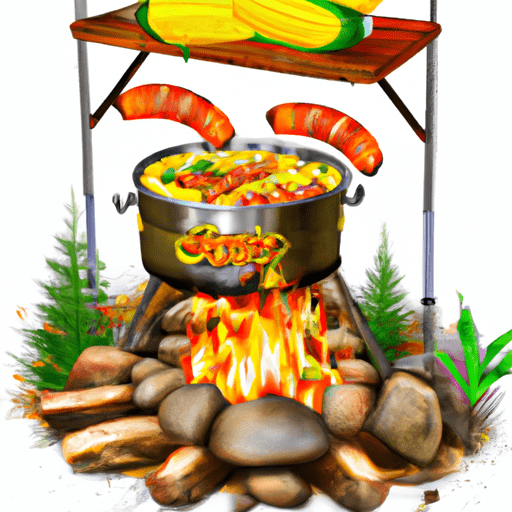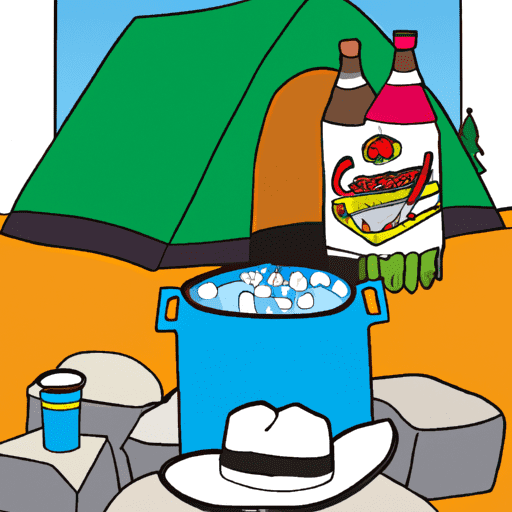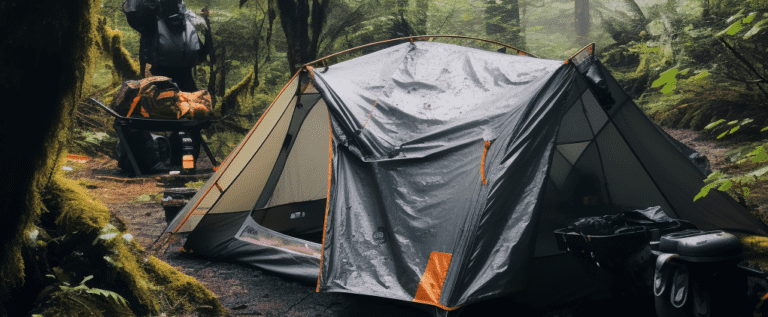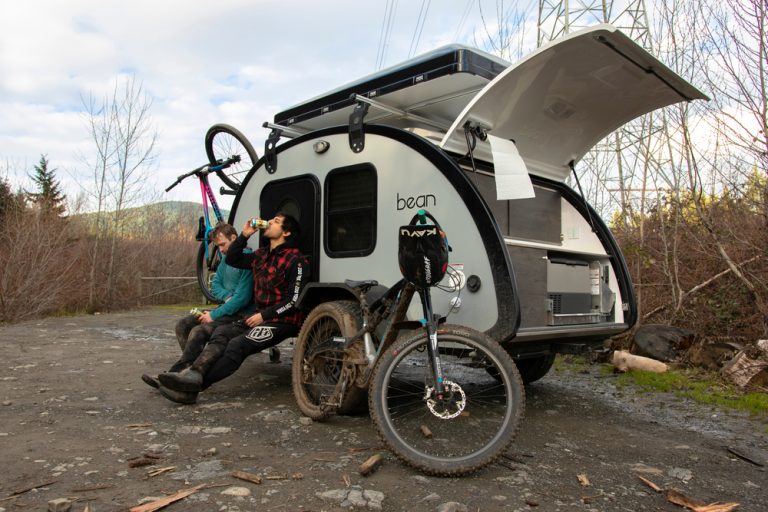Ironically, the beauty of camping in the great outdoors can sometimes be marred by the cold nip in the air. As an avid camper, I've had my share of shivering nights under a clear starry sky. But over time, I've picked up tricks to combat the chill and stay comfortably warm while communing with nature.
It's all about being prepared and strategic—from choosing your camping gear wisely to setting up your tent at an optimal location. You'd be surprised how much difference the right food can make in fueling your body heat. And keeping active during daylight hours is another key strategy not to overlook.
Of course, using heat sources responsibly is crucial for both safety and warmth. So let's delve into these practical tips that'll help you maintain that needed warmth on your camping adventures without sacrificing that sense of freedom we all crave when escaping into nature's embrace.
Key Takeaways
- Choosing the right camping gear with good insulation and waterproof features is crucial for staying warm while camping.
- Strategic tent placement, considering natural wind barriers and sun exposure, can make a significant difference in camping warmth.
- Fueling your body with calorie-dense and nutrient-rich foods, as well as hot drinks and meals, helps in maintaining internal warmth and hydration.
- Using heat sources responsibly, such as portable heaters and campfires, is crucial for safety and warmth during camping trips.
Choosing the Right Camping Gear
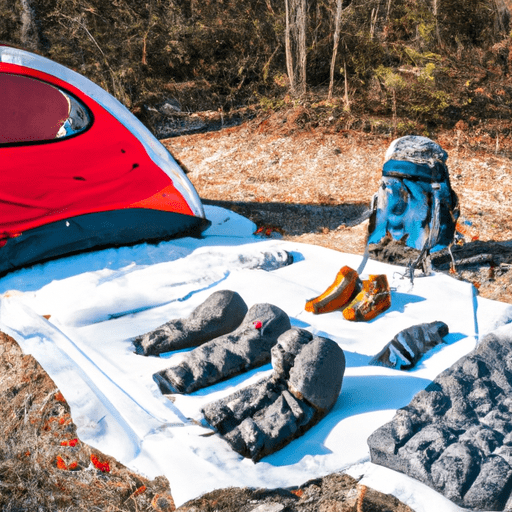
When you're prepping for a camping trip, it's crucial to choose the right gear, as it'll not only impact your comfort but also determine how warm you'll stay during those chilly nights.
I can't stress enough the importance of gear insulation. It's what separates you from the harsh elements outside your tent. A well-insulated sleeping bag will trap your body heat and keep you snug even when temperatures drop drastically.
Waterproof equipment is another must-have. Nothing will make you feel colder faster than getting wet in freezing conditions. So ensure that your tent and outerwear are waterproof or at least water-resistant.
Remember, freedom doesn't mean being unprepared; it means being so well-prepared that nothing can disrupt your connection with nature. Your choice of gear plays a vital role in this preparedness!
Setting up Your Tent in a Strategic Location
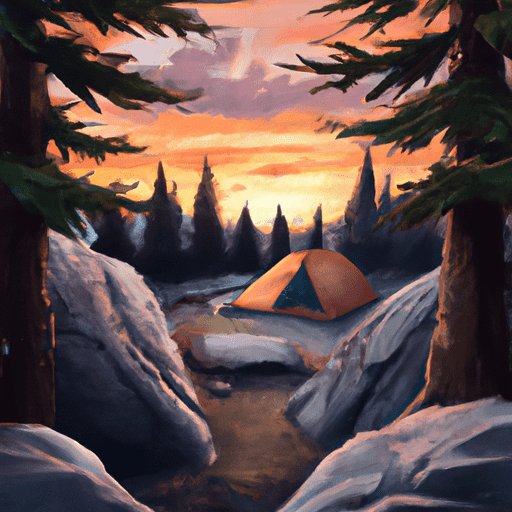
You'd be surprised to know that, according to a survey by the Outdoor Foundation, over half of the campers admitted they didn't consider their tent's location carefully enough and regretted it later due to cold or discomfort. Like them, I've learned that strategic placement can make a significant difference in my camping warmth.
Choose natural wind barriers like thickets or rock formations. They shield against chilly winds.
Opt for sun exposure during the day. It warms your tent naturally.
Avoid valleys where cold air accumulates at night.
Don't set up near water sources as they increase humidity and coldness.
Remember, freedom isn't just about roving wherever you wish; it's also about making smart decisions that ensure your comfort and safety while embracing nature's challenges head-on.
Fueling Your Body with Right Foods

As we venture into the great outdoors, it's paramount to fuel our bodies with the right kinds of food. We need calorie-dense foods that provide sustained energy for those long hikes and late-night campfire stories.
Don't forget about hot drinks and meals, as they not only warm us up in chilly weather but also contribute to our overall hydration and nutrition during the camping trip.
Calorie-Dense Foods
Don't underestimate the power of calorie-dense foods; they're your body's natural furnace, providing the energy needed to generate warmth.
When I'm camping in cold weather, my go-to snacks are packed with calories and nutrients.
Here's a basic guide to some nutrient-rich snacks and energy-boosting recipes:
Nutrient-rich Snacks:
- Nuts and seeds: These little powerhouses are crammed full of good fats, proteins, and essential minerals.
- Dark chocolate: Not only does it satisfy sweet cravings but also provides an excellent source of antioxidants.
Energy Boosting Recipes:
- Peanut butter banana sandwich: Easy to make on a campfire grill, this classic combo is high in protein and healthy fats.
Remember, staying warm isn't solely about clothing layers or fire; it's about fueling yourself from within too.
Hot Drinks and Meals
Keeping yourself well-hydrated with hot drinks and meals can significantly boost your body's ability to regulate temperature. Picture this, it's a chilly winter night under the stars, and you're sipping on a steaming cup of cocoa or enjoying a piping bowl of chili. Not only does it bring comfort, but it also aids in maintaining internal warmth.
This is where thermal flasks come into play. They're portable, durable, and keep your liquids hot for hours on end—perfect for those long nights in the wilderness.
Spiced beverages such as cider or chai tea are another great option. Their ingredients have been known to stimulate blood flow and generate heat within the body.
So remember: pack your thermal flask with some spiced goodness next time you hit the trail—it'll do wonders in keeping you warm!
Keeping Active During the Day
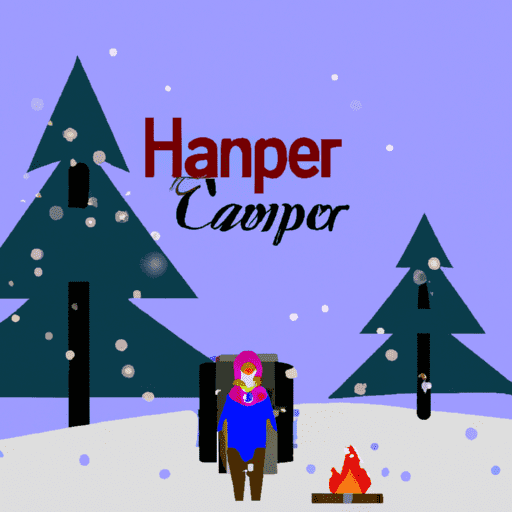
You'll find that staying active during the day can not only keep you warm, but also enhance your overall camping experience by encouraging exploration and connection with nature.
One of the best ways to stay warm is to engage in Daytime Exercises or Outdoor Games.
Here are some activities that can help:
Walking or hiking: Exploring the surrounding area not only keeps your heart rate up but also allows you to appreciate the beauty of nature.
Outdoor games: From Frisbee to soccer, engaging in outdoor sports can be a fun way to keep everyone moving and generate heat.
Daytime exercises: Simple exercises like jumping jacks or push-ups can significantly increase your body temperature.
Remember, keeping active helps stimulate blood circulation, which in turn helps maintain body warmth. So get moving and enjoy the great outdoors!
Using Heat Sources Responsibly
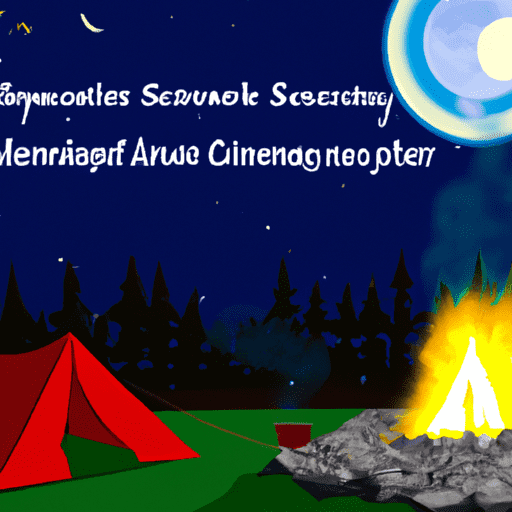
Now that we've talked about staying active during the day while camping, let's move on to an equally important aspect – responsibly using heat sources.
We'll look into safe practices for using portable heaters, and also delve into the nitty-gritty of managing campfires and fire safety outdoors.
It's crucial to remember these points not only for our comfort and warmth but also to ensure we leave minimal impact on nature around us.
Safe Use of Portable Heaters
Channeling your inner Bear Grylls may feel adventurous, but when it comes to maintaining warmth in the camping site, relying on a portable heater is a far safer and more comfortable option. But as with any heat source, there are precautions I need to take.
Heater Maintenance: Proper care of my portable heater is crucial. It's important that I regularly check for defects and clean dust or debris from vents.
Placement: I keep my heater at least three feet away from flammable materials like tents or sleeping bags.
Carbon Monoxide Risks: Ventilation is key since heaters can produce this deadly gas. Always ensure there's enough airflow around me when using the heater.
Staying warm while camping shouldn't compromise safety or comfort; it just takes some planning and common sense precautions!
Campfires and Fire Safety
Let's move on to one of the most quintessential parts of any outdoor adventure – the campfire, and more importantly, how to keep it safe and controlled. The key is understanding firewood selection and adhering to Smokey Bear's guidelines.
| Firewood Selection | Smokey Bear's Guidelines |
|---|---|
| Choose dry, seasoned wood | Never leave a campfire unattended |
| Hardwoods like oak or hickory are ideal | Always have water nearby for emergencies |
| Avoid soft woods like pine or cedar which pop and throw sparks | Drown your fire with water before leaving it |
| Wood should be cut small enough to fit in your stove or fire pit | Stir ashes after dousing them with water, ensure they are cool to touch |
Remember these vital tips next time you're warming yourself by a crackling campfire!
Tips for Sleeping Warm
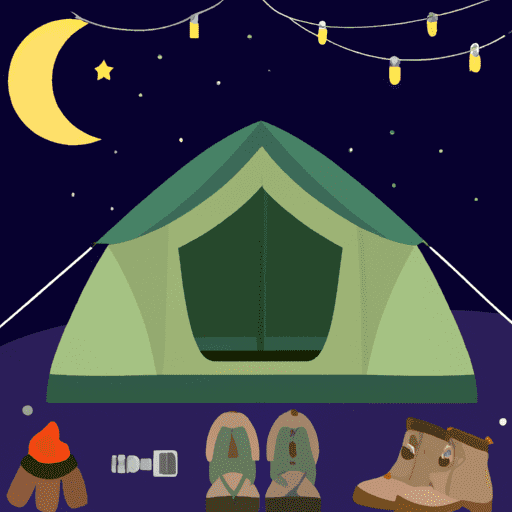
As we move on from discussing the responsible use of heat sources, let's delve into some practical tips for sleeping warm during those chilly nights under the stars.
I've found two strategies particularly effective: using a sleeping bag liner and wearing a beanie or hat to bed. These are simple yet impactful measures that can make a world of difference in keeping you snug and comfortable throughout the night.
Using a Sleeping Bag Liner
You know the old saying, ‘an ounce of prevention is worth a pound of cure?' Well, when you're camping in cold weather, slipping into a sleeping bag liner can provide that extra bit of warmth that keeps the chill at bay.
Liner materials vary widely; some are made from soft fleece or silk for comfort, while others use insulating synthetics to trap heat effectively. The beauty of these liners is their versatility. You can easily slide them into your existing sleeping bag to add an extra layer of insulation on those particularly frosty nights.
Plus, they're lightweight and pack down small – perfect for those who enjoy the freedom of packing light but don't want to compromise on staying warm. It's a clever little trick that could make all the difference in cold conditions.
Wearing a Beanie or Hat to Bed
Ever thought of pulling on a beanie or hat before tucking into your sleeping bag for the night? It may sound odd, but trust me, it's a brilliant trick to stay warm while camping. Your head is a significant source of heat loss, and wearing a hat can help trap that warmth.
Here's a beanie materials comparison to consider:
- Wool: Provides excellent insulation even when wet.
- Fleece: Highly breathable and quick-drying.
- Acrylic: Lightweight and often less expensive than wool or fleece.
- Cotton: Not recommended as it absorbs moisture and loses its insulating properties.
There's also an added perk – benefits of night caps extend beyond warmth. They protect your hair from getting tangled, keep bugs at bay, and prevent you from scratching during sleep. So go ahead, give it a shot!
Conclusion
I've discovered that with the right gear, location, food, activity, and responsible heat sources, staying warm while camping is totally achievable.
Did you know a study found 30% of campers don't properly insulate themselves at night? Don't be part of that statistic!
With these practical tips, you can enjoy your outdoor adventures without sacrificing comfort. Remember, it's all about being prepared and taking care of yourself in the great outdoors.


